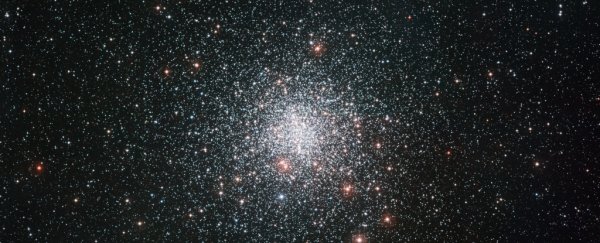What's in a galaxy? A lot, apparently. We now have the most accurate measurements of the size and mass of the Milky Way ever calculated, and it's turned out to be more massive than we thought.
How massive? Well, about 1.5 trillion Suns' worth of mass (solar masses), within a radius of around 129,000 light-years.
That's over twice as much as previous estimates - according to a 2016 study, the Milky Way was estimated at around 700 billion solar masses.
So what has changed? We now have ESA's Gaia mission, a dedicated project to accurately map the Milky Way in three dimensions. It's given us the most detailed map of our home galaxy ever made, and has been refining our knowledge all over the shop.
By combining Gaia data with those from Hubble Space Telescope observations, a research team has been able to infer the galaxy's size and mass based on the orbital motion of groups of stars called globular clusters, out in the galactic halo.
The mass of the Milky Way can't just be guessed based on what we can see - because dark matter is playing a role. And we can't detect dark matter directly. But we know something is out there, because of the orbital velocity of the outer region of the galaxy.
It orbits much faster than it should based on the matter we can detect - as though something, some undetectable mass, is creating extra gravity in the Universe.
Because dark matter can't be observed directly, we have to infer its mass based on other methods. By starting with that outer-galaxy orbital velocity, astrophysicists can work backwards to calculate the mass responsible, based on Kepler's laws of orbital motion.
This is where Gaia and Hubble come in. Their combined observations over a period of 10 years have provided more accurate measurements of the orbital motion of globular clusters in the outer reaches of the Milky Way.
"The more massive a galaxy, the faster its clusters move under the pull of its gravity," said astrophysicist Wyn Evans of the University of Cambridge in the UK.
"Most previous measurements have found the speed at which a cluster is approaching or receding from Earth, that is the velocity along our line of sight. However, we were able to also measure the sideways motion of the clusters, from which the total velocity, and consequently the galactic mass, can be calculated."
This is how the team reached the 1.5 trillion solar masses figure. But there are only about 200 billion stars in the Milky Way. Sagittarius A*, the supermassive black hole at the galactic centre, accounts for another 4 million solar masses. And there's a bunch of dust and gas.
But, all up, around 90 percent of that mass? Yeah. It's dark matter. And that is a really nifty thing to know.
"We want to know the mass of the Milky Way more accurately so that we can put it into a cosmological context and compare it to simulations of galaxies in the evolving universe," explained physicist Roeland van der Marel of the Space Telescope Science Institute in the US.
The new measurements put the Milky Way at a pretty healthy size and mass for its class, but the extra heft doesn't even put us near the biggest galaxies - those are in the range of 30 trillion solar masses. Our galaxy is in the intermediate range.
But it could adjust the Milky Way's position in the Local Group of galaxies. For many years, we thought the biggest galaxy in nearby intergalactic space was Andromeda, with the Milky Way coming in second.
But new calculations last year put Andromeda at around 800 billion solar masses. Which could mean that the Milky Way is actually number one - and has been all along.
And that, in turn, could mean that Andromeda gets subsumed into the Milky Way when the pair collide in 4.5 billion years, rather than the other way around as we previously thought.
It's going to be absolutely epic.
The research has been accepted into The Astrophysical Journal, and is available on arXiv.
